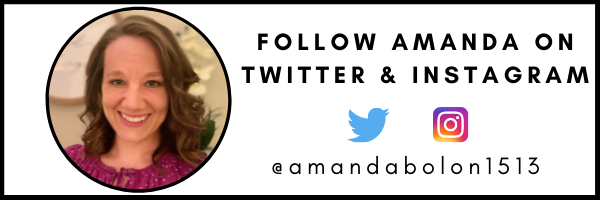TL;DR:
- The Grid Method can work for any age group, including elementary-aged students.
- Create your grid with your students in mind.
- Set up a thoughtful learning environment.
- Maximize learning time.
- Be flexible and reach out for help if you need it.
The Grid Method is the premiere solution in the world of mastery learning. Educators from around the world are diving in headfirst to become better for their students. One of the biggest questions asked is from primary educators. The question: how do I make this work in my classroom? I felt the same way! After running The Grid Method in my classroom for over three years, I can tell you that it can be implemented successfully. Here are some tips and tricks I have for any primary educators who don’t know where to begin.
Elementary Grid Tip #1: Create Your Grid with Your Students In Mind
Creating a grid can be overwhelming at first, but like we tell students with their writing, create it with the reader in mind. Whether you teach kindergarten or fifth grade, you need to gear the grid itself to your audience.
Examples include:
K-1st: pictures/symbols, very few words (if any), fewer learning opportunities, repetitive activities to help with understanding, more hands-on activities vs. paper/pencil, only give one level of the grid at a time.
2nd-3rd: simple words/sentences, add more learning opportunities, some repetitive activities, include hands-on, paper/pencil, and technology with activities.
4th-6th: more complex activities and directions, comprehensive and in-depth learning opportunities, include more overarching projects.
No matter your grade level, you can adapt a grid to meet the needs of your learners. The way you set up a grid one year may be completely different from how you set it up the following year.
Students at the primary level are more adaptable to trying new things, and we can build that 'keep trying' mentality from a young age. Share on XElementary Grid Tip #2: Set Up a Thoughtful Learning Environment
The grid itself is a very small part of the success you have with your students. They need an environment that will be helpful in their learning process. For younger students, that may mean color-coded drawers that match colors on their grid, or having specific areas in the room labeled so that they know where to go for certain activities. This can help students build a routine of knowing where to go when they need something, and it will help you avoid constant interruptions.
You may also want to allow students to work where they feel most comfortable. I have included flexible seating in my classroom for a few years, and when students can choose where/how they learn best, it gives them ownership of that learning. If you walk into a flexible seating classroom, you will see students on wobble stools, bean bag chairs, standing, sitting on the floor, etc. Students learn quickly, even in primary grades, what works best for them, and they begin to make conscious choices.
Elementary Grid Tip #3: Maximize Learning Time
Elementary educators are already magicians at multitasking. Use that to your advantage when running a grid in a primary classroom. Most lower elementary classrooms operate around whole group and center time (independent work). This structure works wonderfully for using a grid.
Whole group instruction is key, especially with little ones. You can use this time to teach a new concept that will be coming soon in your grid, or to review something students are struggling with. Just because it is called “whole group” instruction doesn’t mean it has to be everyone. If you notice that 6 of your students are all having trouble with the same concept, you can pull just those students to receive instruction while the others continue work independently. The same goes for those 4 students who fly through the work. You can meet with them to provide enrichment opportunities.
One-on-one intervention is also something that you will get with all of your students. As you meet with students to sign off on learning opportunities, look at what they excel with and take note of their misunderstandings. This will provide you with a plethora of information that you otherwise would have missed in a traditional learning setting.

Elementary Grid Tip #4: Be Flexible
Everything will not always go as planned. Be flexible when it comes to the learning opportunities in the grid itself. You may believe that you have created the perfect mix of hands-on, paper/pencil, and technology-based opportunities, and then you learn that your students don’t know how to read the content, or that they have no idea how to use the computer.
Take a deep breath and adjust. Create your grid, or recreate it, based on what you learn about students. If they don’t like the game you chose, switch it out. When students haven’t learned how to drag and drop on a computer, do a mini-lesson on that skill and try it again. Realize that your first attempt may fail, but you have the power to turn that into a teaching point for students.
[scroll down to keep reading]Elementary Grid Tip #5: Reach Out for Help
If you are an elementary educator, and you truly don’t know how to get started, reach out to someone who has tried The Grid Method before. The Teach Better Team is always willing to connect you with teachers running this in their classrooms every day. In this profession, we are not on an island. We are meant to make connections, and doing that is what changed my classroom into what it is today!

Classrooms are transformed by using The Grid Method Mastery Learning Framework every single day! Elementary classrooms can run this just as well, if not more effectively, than middle and high school educators. The reason for that bold statement is that students at the primary level are more adaptable to trying new things, and we can build that “keep trying” mentality from a young age.
The moral of the story: try it! I am betting you won’t regret it!
See the full blog series here!
About Amanda Bolon
Amanda is a coffee-obsessed second grade teacher from southeast Ohio. She enjoys teaching littles and thinking creatively to help her students learn. Amanda thrives on collaboration with peers in order to someday achieve her goal- change the world, one student at a time! Amanda is also the Community Relations Manager for the Teach Better Team. She couldn’t do what she does without the support of her amazing husband Drake and her dog Lily.



